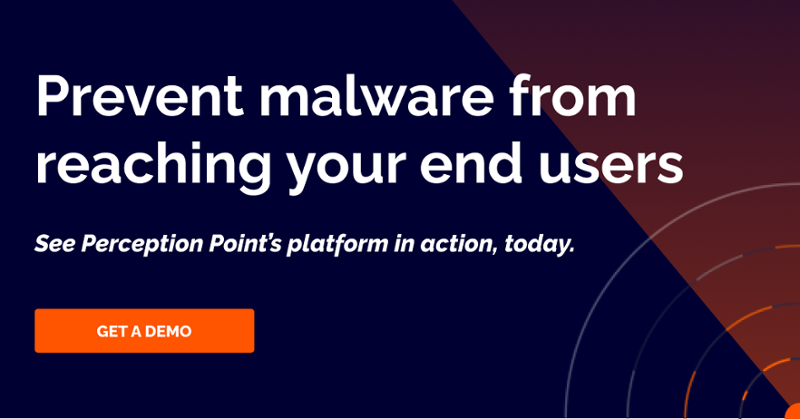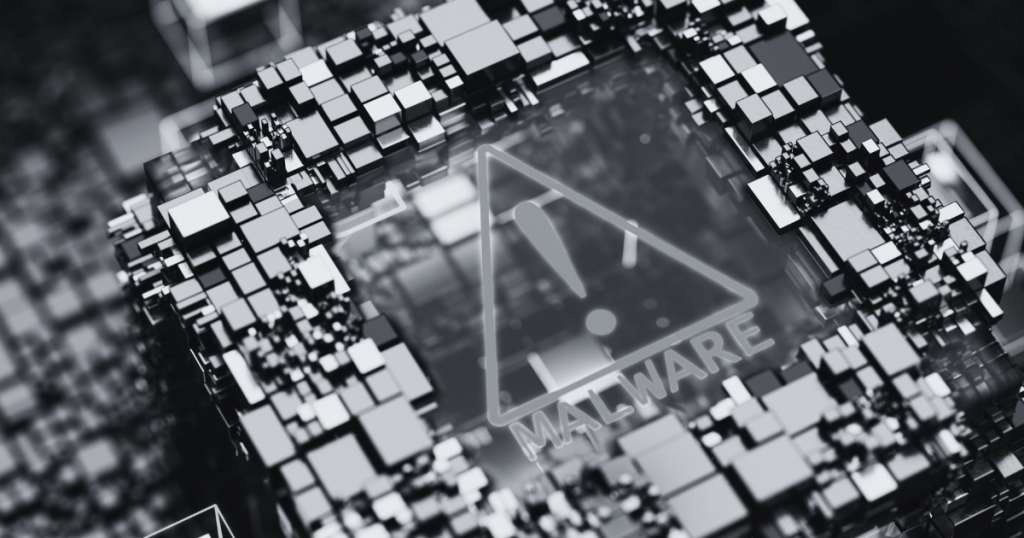What Is a Malware Attack?
A malware attack involves the unauthorized infiltration of malicious software into a computer system or network, aiming to damage, disrupt, or gain unauthorized access to data and resources. This software can take various forms, including viruses, worms, ransomware, and spyware, each designed to exploit vulnerabilities within the targeted system.
The methods of deployment for these malicious entities range from phishing emails and compromised websites to exploiting software vulnerabilities. Once inside the system, malware can execute a range of destructive activities such as stealing sensitive information, encrypting files for ransom, or creating backdoors for future access.
In this article
The Objective of Malware Attacks
Malware can be used by attackers to:
- Exfiltrate information: Attacks target sensitive data such as personal identification details, financial records, and proprietary business information. By infiltrating a system, the malware covertly extracts data and transmits it to an external command and control server operated by cybercriminals. The stolen data can be used for various malicious purposes, including identity theft, financial fraud, or corporate espionage.
- Disrupt operations: Malware can impair or halt the functions of individual systems, networks, or entire organizations. This disruption can manifest as slowed system performance, corrupted files, or complete system failure. The mechanisms behind these disruptions often involve exploiting vulnerabilities to execute unauthorized commands or deploying ransomware to lock out legitimate users.
- Demand payment: Some malware specifically aims to extort money from its victims, leveraging the threat of damage or the promise of cessation of harm as its primary tool. Ransomware encrypts the victim’s data or locks them out of their systems and demands payment for decryption keys or reaccess.
- Establish persistent access for further attacks: Malware can be used by attackers to create long-term entry points to compromised systems. This persistent access is typically achieved through backdoors, Remote Access Trojans (RATs), and botnets. Backdoors allow attackers to re-enter the system at any time, while RATs provide continuous remote access for activities such as data exfiltration and surveillance.

Tal ZamirCTO, Perception Point
Tal Zamir is a 20-year software industry leader with a track record of solving urgent business challenges by reimagining how technology works.
TIPS FROM THE EXPERTS
- Monitor for signs of insider threats. Establish monitoring systems that can detect unusual behavior by insiders who might inadvertently or maliciously introduce malware into the organization. Correlate user activities with access patterns to identify potential insider threats.
- Develop an incident response playbook for malware outbreaks. Create a detailed incident response playbook specifically for handling malware attacks. This should include predefined steps for containment, eradication, recovery, and communication. Regularly test and update the playbook to ensure it aligns with evolving threats.
- Deploy a zero-trust architecture. Adopt a zero-trust model where every user and device is considered untrusted by default. This model requires continuous verification and strict access controls, reducing the risk of malware spreading within the organization.
- Conduct adversary simulation exercises. Periodically run red team exercises and penetration testing that simulate real-world malware attacks. This helps identify weaknesses in your defenses and allows you to assess the effectiveness of your incident response protocols.
10 Types of Malware Attacks
Here are some of the most commonly used types of malware.
Virus
A computer virus attaches itself to a legitimate program or file, enabling it to spread from one system to another, leaving infections in its wake. Once it infiltrates a system, the virus can execute malicious actions such as corrupting data, stealing information, or giving attackers remote control over the affected device.
Viruses can replicate themselves and spread to other files and systems, often modifying or damaging the files they infect. They typically require some form of user action, such as downloading infected files from the Internet or opening email attachments from unknown sources.
Worms
Worms are a type of malware designed to replicate themselves and spread across networks without human intervention. Unlike viruses, which require the execution of an infected host file to propagate, worms take advantage of vulnerabilities in operating systems and network protocols to spread autonomously.
Once active on an infected system, worms can perform a variety of malicious tasks, such as deleting files, sending out spam emails, or installing additional malware. The self-replicating nature of worms allows them to spread rapidly across connected systems, potentially leading to widespread network disruption and performance degradation.
Ransomware
Ransomware encrypts a victim’s files or locks them out of their system, demanding payment for the decryption key or release. It’s a direct attack on data availability, often targeting individual users and organizations across various sectors. Once infected, the victim faces a dilemma: pay the ransom and potentially encourage future attacks or lose access to critical data permanently.
Fileless Malware
Fileless malware uses in-memory techniques to execute malicious activities within the system’s RAM, avoiding the use of traditional files and leaving minimal traces for detection. By exploiting existing legitimate system tools and processes, such as PowerShell or Windows Management Instrumentation (WMI), fileless malware can bypass conventional antivirus solutions that scan files for threats.
Spyware
Spyware secretly monitors and collects information from targeted systems. It can track a range of user activities, including keystrokes, browsing histories, and system information, transmitting this data back to the attacker. Often installed without the user’s knowledge or consent, spyware can compromise personal privacy and lead to identity theft or corporate espionage.
Adware
Adware, short for advertising-supported software, automatically displays or downloads advertising material when a user is online. While not always malicious, some adware tracks browser history and personal information without consent to tailor specific ads, raising privacy concerns. Malicious adware can impact system performance by consuming bandwidth and processing power.
Trojans
Trojans are deceptive software that masquerade as legitimate applications but perform malicious activities once executed. Unlike viruses and worms, Trojans do not replicate themselves but can provide a backdoor for cybercriminals to access the system or deliver additional malware. They might rely on tricking users into installing them, or be deployed without the user’s knowledge by exploiting software vulnerabilities.
Rootkit
A rootkit is a clandestine malware type designed to gain unauthorized access to a computer system without being detected. It operates by modifying the host operating system’s functionality or exploiting its software to conceal its presence, allowing remote control, surveillance, or system manipulation. Rootkits can be particularly challenging to detect and remove due to their ability to hide deep within the system.
Bots
Bots are autonomous programs that perform specific tasks, often operating as part of a network of infected devices known as a botnet. Cybercriminals use bots for various malicious activities, including distributed denial-of-service (DDoS) attacks, spam campaigns, and fraud. By taking control of a large number of devices, attackers can amplify the impact of their actions.
Keyloggers
Keyloggers record keystrokes on a compromised device, capturing sensitive information such as passwords, credit card numbers, and personal messages. They operate silently in the background, often without the user’s knowledge, and can either store the collected data locally for later retrieval or send it directly to a remote attacker. This can lead to identity theft, financial fraud, and unauthorized access to confidential systems.
Examples of Malware Attacks
Here are some examples of real-world attacks and the malware that enabled them.
Lockbit Ransomware
LockBit Ransomware uses a Ransomware-as-a-Service (RaaS) model that enables widespread attacks. By leveraging a network of affiliates, LockBit targets various sectors, encrypting data and demanding ransom for decryption keys. This approach generates revenue through ransom payments and pressures victims by threatening to publish stolen data if demands are not met.
Despite law enforcement efforts to disrupt its operations, the LockBit network was able to rapidly recover from takedown attempts. By maintaining backup infrastructure and employing sophisticated encryption techniques, LockBit demonstrates the challenges of combating ransomware groups that adapt quickly to countermeasures.
XXXGPT
XXXGPT is a black hat AI tool based on large language models (LLMs), actively promoted on hacker forums, known for its extensive range of malicious capabilities. It provides code for various types of malware and cyber attacks, supporting the creation of botnets, remote access trojans (RATs), keyloggers, crypters, infostealers, cryptostealers, point-of-sale (POS) malware, and ATM malware.
These capabilities allow attackers to develop and deploy a wide array of malicious software to compromise systems, steal sensitive information, and conduct fraudulent activities. The developers of XXXGPT claim the tool is supported by a team of experts who are able to customize it for specific use cases.
Qakbot (Qbot)
Qakbot started as a banking trojan aimed at stealing online banking credentials. Over time, its functionality expanded, making it capable of delivering various malware types, including ransomware, and functioning as a remote access trojan (RAT). According to Europol, after a recent operation to shut down Quakbot infrastructure, law enforcement agencies found the malware on over 700,000 computers worldwide.
Qakbot’s distribution involves spam and phishing email campaigns. It uses various delivery methods such as malicious links and attachments. Once inside a network, Qakbot can spread laterally to infect additional systems. Its capabilities include collecting sensitive information, brute-forcing passwords, keystroke monitoring, and downloading additional malware,
NJRat
NJRat, also known as Bladabindi, is a RAT first identified in 2012. It has remained active over the years, and was the 8th most prevalent malware variant in mid-2023. It can infiltrate systems, allowing attackers remote control capabilities.
The malware spreads through phishing attacks, drive-by downloads, and infected USB drives. Once installed on a victim’s system, NJRat grants attackers capabilities such as keylogging, webcam access, data theft from browsers and crypto wallets, file manipulation, and more. It uses evasion techniques to avoid detection and can download additional malicious payloads.
How to Prevent Malware Attacks
Here are some of the main measures that can help protect organizations from malware attacks.
1. Use Antimalware Software
Antimalware software actively scans and monitors the system for malicious activities, identifying and neutralizing threats such as viruses, worms, ransomware, and spyware. It compares potential threats against a database of known malware signatures and uses heuristic analysis to detect new or unknown variants based on behavior.
To maximize protection, keep the antimalware software updated with the latest malware definitions and ensure real-time scanning is enabled. Regular full system scans are recommended to detect dormant or sophisticated malware that might evade initial checks.
2. Perform Regular Vulnerability Scans
Vulnerability scans assess the security posture by detecting outdated software, missing patches, and misconfigurations that serve as potential entry points for attackers. Highlighting vulnerabilities helps prioritize remediation efforts to strengthen defenses against targeted malware attacks.
Implement a schedule for frequent scanning to ensure continuous awareness of the system’s vulnerability status. After each scan, analyze the results and take immediate action to address identified issues.
3. Implement the Principle of Least Privilege and Just-in-Time Access
Applying the principle of least privilege involves granting users and applications the minimum level of access necessary to perform their functions. This limits the potential damage malware can cause by restricting its access to system resources and sensitive information. Regular audits of user privileges help ensure that access rights remain aligned with job requirements.
Just-in-time (JIT) access complements least privilege by providing temporary elevation of privileges when necessary for specific tasks. Access is granted on an as-needed basis and automatically revoked once the task is completed. This method minimizes the window of opportunity for attackers to exploit elevated privileges.
4. Create Regular and Verified Backups
By maintaining up-to-date copies of important data, organizations can ensure business continuity even if their primary systems are compromised. These backups should be stored in secure locations, isolated from the main network to prevent them from being targeted by ransomware or other types of malware.
Verification of backup integrity helps guarantee that data can be restored when needed. Regular testing of backup processes and recovery procedures ensures that backups are current, complete, and capable of restoring systems to their operational state.
5. Use Browser Security Extensions
Browser security extensions enhance online safety by blocking malicious websites, ads, and phishing attempts. They work within the browser to provide real-time protection against threats encountered during web browsing. By using denylists and heuristic analysis, security extensions can prevent access to known harmful sites and detect suspicious behavior in new ones.
Some browser extensions offer additional features such as a security sandbox that enables secure detection of ransomware and zero-day threats before they enter the user’s environment, data loss prevention (DLP), and tracking protection, which prevents advertisers from collecting user data across sites. Browser governance capabilities automatically identify and disable suspicious extensions and offer browser-level security controls.
6. Continuously Educate Users
By regularly informing and training users on the latest cyber threats, including the various types of malware and their delivery methods, organizations can reduce the likelihood of successful intrusions. Implement ongoing awareness campaigns to keep cybersecurity at the forefront of users’ minds.
Education programs should cover safe browsing practices, the importance of not clicking on suspicious links or downloading attachments from unknown sources, and recognizing phishing attempts that may serve as gateways for malware.
7. Use Email Security Solutions
Email security solutions scrutinize incoming emails for malicious links, attachments, and phishing attempts, blocking potential threats before they reach the user. They use techniques like sandboxing to analyze suspicious email content in a secure environment, detecting and mitigating threats without risking the actual network.
These solutions often include features like anti-spam filters and fraud detection algorithms that identify and quarantine phishing emails and spam. An advanced email security platform should have a minimal false positive rate, use AI to check for anomalies, and include a 24/7 incident response service, with human experts to complement AI-based detection.
Learn more in our detailed guide to malware prevention
Preventing Malware with Perception Point
Perception Point developed next-gen static and dynamic engines that detect and prevent any attempt to deliver malware.
These dynamic and static engines are broken up into several elements, such as the Recursive Unpacker and Perception Point’s Signature Analysis engines and phishing engines, which use proprietary image recognition capabilities to prevent any type of malware delivery.
Contact us for a live demo to see how Perception Point stops malware in its tracks.

A malware attack involves the unauthorized infiltration of malicious software into a computer system or network, aiming to damage, disrupt, or gain unauthorized access to data and resources. This software can take various forms, including viruses, worms, ransomware, and spyware, each designed to exploit vulnerabilities within the targeted system.
Malware can be used by attackers to:
– Exfiltrate information
– Disrupt operations
– Demand payment
– Establish persistent access for further attacks
Here are some of the most commonly used types of malware.
– Virus
– Worms
– Ransomware
– Fileless Malware
– Spyware
– Adware
– Trojans
– Rootkit
– Bots
– Keyloggers
Here are some examples of real-world attacks and the malware that enabled them.
– Lockbit Ransomware
– XXXGPT
– Qakbot (Qbot)
– NJRat
Here are some of the main measures that can help protect organizations from malware attacks.
1. Use Antimalware Software
2. Perform Regular Vulnerability Scans
3. Implement the Principle of Least Privilege and Just-in-Time Access
4. Create Regular and Verified Backups
5. Use Browser Security Extensions
6. Continuously Educate Users
7. Use Email Security Solutions
























